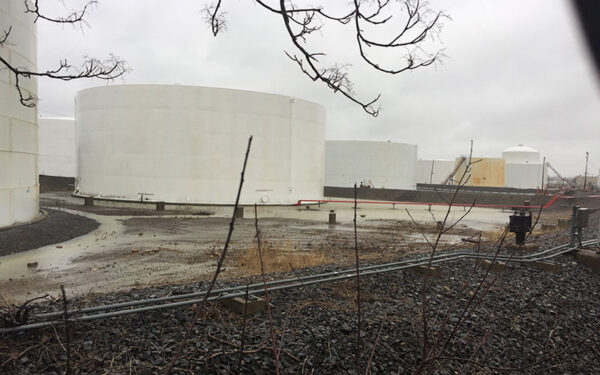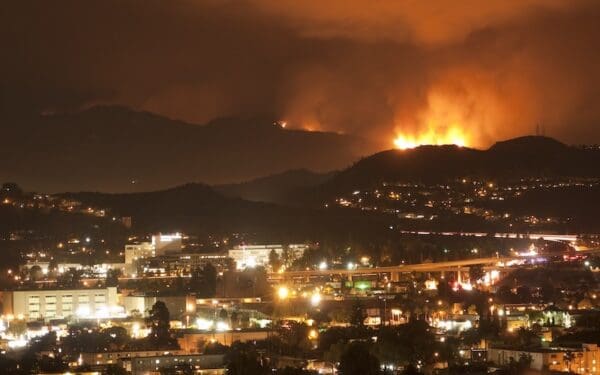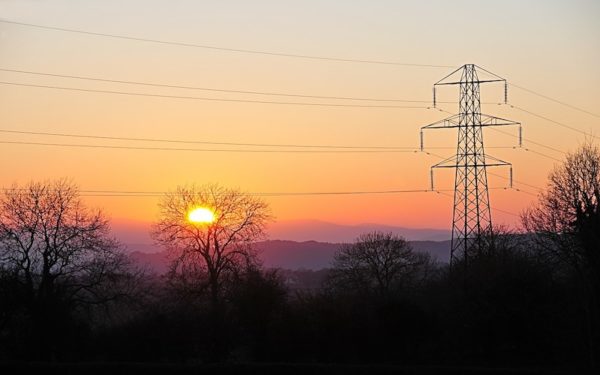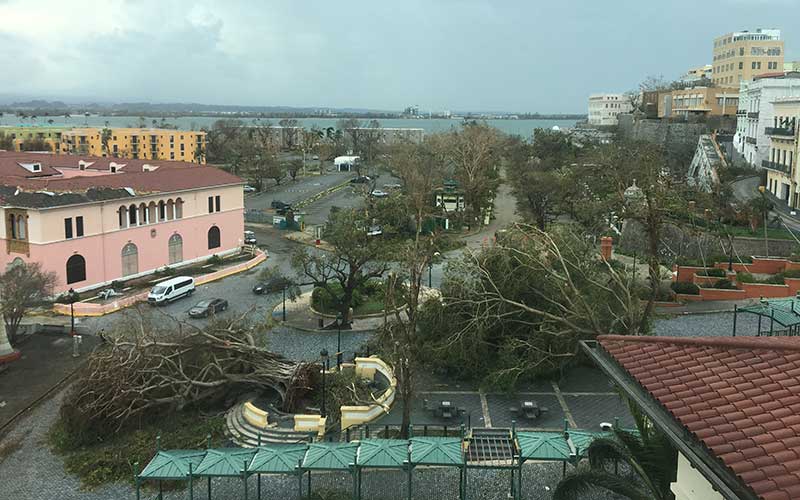
Hurricane María brought unprecedented destruction to Puerto Rico. Is New England ready for the record-breaking weather climate change will bring? Photo: Rohemir Ramirez
A year ago, I was living in San Juan, Puerto Rico, as Hurricane María struck the island. After spending several years in Massachusetts, I had returned home just a few months before thanks to a year-long federal clerkship in the city. Little did I know that by coming home to Puerto Rico then, I would become a firsthand witness to the devastating effects of climate change.
I grew up in Puerto Rico, so tropical storms and hurricanes were not only common to me but expected during every Atlantic hurricane season. However, the size and intensity of Hurricane María confirmed that the effects of climate change are here now, and not being prepared has severe and deadly consequences – in our case, the unfortunate and untimely death of nearly 3,000 people.
But the lessons from Hurricane María are not just for the people of Puerto Rico or even our Federal Emergency Management Agency (FEMA). Erratic and extreme weather is becoming the new normal here in New England, and we, too, need to heed the lessons from this past year of deadly and violent storms.
Before María: Getting Ready
As the storm approached, our state government cautioned that Hurricane María had the potential to be the most devastating storm in just over a century and encouraged Puerto Ricans to take it seriously. Families were evacuated from coastlines and flooding areas. People rushed to supermarkets to buy food and water. Long lines of cars could be seen at almost every gas station.
My family and I made sure that we had enough food and water to last for about two weeks. We secured our home and my father’s business with home-made storm shutters, then shut ourselves indoors to wait out the storm safely. While we were aware of María’s destructive potential (it was classified as a Category 5 Hurricane on September 18, two days before striking the island), we expected its actual impacts would be the same as past storms: minimal (or no) casualties, some property damage, and several weeks without power. Our daily lives would be disrupted for a few days, maybe a week, before things got “back to normal.”
We were grossly mistaken.
During María: Waiting Anxiously
Most people have been able to appreciate footage of how Hurricane María looked and sounded while it slowly crossed Puerto Rico. To this day, however, I can’t capture in words the anxiety my family and I felt as Hurricane Maria’s 155 mph winds and non-stop rain hit our island. While the hurricane first made landfall in the lower east coast of Puerto Rico at around 6am on September 20, the anticipation of its impact kept my family and me awake throughout the night before.
Already without electricity and with no communications, we relied on battery-powered radios to follow the news and government updates on the hurricane. The next 24 hours felt eternal. As the rain poured and the roar of 100 mile per hour winds circled our house, we realized that this was no typical storm, but it was still difficult to imagine just how devastating and long-term its impacts would be.
Aftermath: The Reality of Climate Change
“We never anticipated a scenario of zero communication, zero energy, zero highway access.” — Gov. Ricardo Rosselló
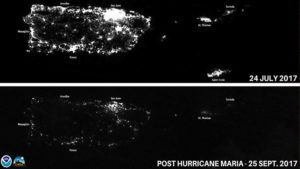
Once it was safe to leave our house, my father and I tried to reach his business to get a first impression of any possible damage. But our attempt was futile. For the first 12 to 24 hours, fallen electric posts or trees blocked the roads around our home, and the highway was under water. Hurricane María had left us, and all of Puerto Rico, stranded in the dark and unable to communicate. It was as if Puerto Rico had gone back in time.
That’s when our daily routine changed. Instead of my usual 9am to 6pm workday, my time now consisted of a daily quest for food, water, and gas that started at 4am and ended at 6pm. For weeks, supermarket shelves were mostly empty, and bottled water and ice were scarce. While government officials said that Puerto Rico had enough gas and diesel to meet the immediate demand, blocked roads coupled with the lack of planning by distributors and the state government resulted in inconsistent delivery and never-ending lines at the pump.
This was our new normal. And no one knew when it would end. In my case, our house was without running water for a week and without power for four months. But we were fortunate. The most vulnerable communities were cut off from help by flooded roads, downed trees, and fallen power lines. Thousands of homes and businesses were left without running water and power for months. PREPA, the local power authority, confirmed that it restored power to the last affected community 11 months after the hurricane struck. And, as previously mentioned, nearly 3,000 people died as a result of this catastrophic storm fallout.
New England: Are We Ready?
The daily struggles that followed Hurricane María show the importance of state, county, city, and town preparedness for natural disasters. I do not speak for others when I talk about these struggles. My family and I recognize that we were fortunate that none of us suffered injuries and our home was not damaged. But the lack of emergency planning by both the state and federal entities in charge of natural disaster response showed the world how NOT to respond to such catastrophes. When the next big storm hits, we need to think beyond our status quo emergency response. All levels of government must prioritize food, water, and gas distribution; access to emergency health providers; and quick assistance to low-income communities.
Now that I live in Massachusetts once again, I can’t help but ask: Are the New England states prepared to face the challenges of extreme weather? New England is not immune to tropical storms and hurricanes, which will only grow more intense with climate change.
The long-term effects of the government’s lack of preparedness to provide immediate and effective relief to a natural disaster like Hurricane María are unknown. But it is within our power here in New England to be prepared.

